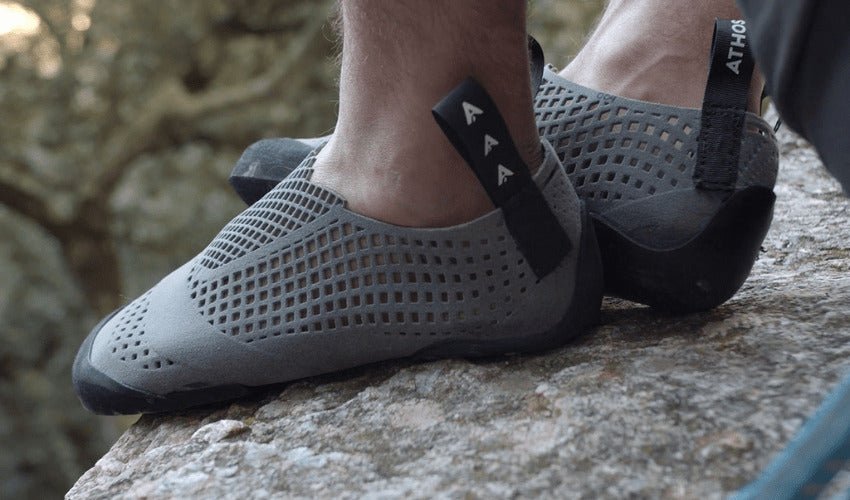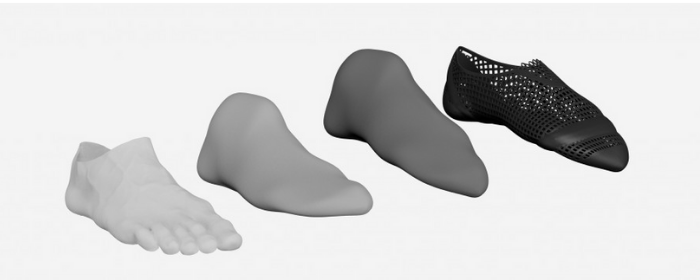
3D printing has done it again. It has been growing in popularity in the world of sports and footwear and now once again the method is being used. Now in the development of these climbing shoes, called Athos. Also known as “cat feet”, this type of footwear is essential for athletes who climb, as it allows better support in the holds, preventing them from slipping. It is undoubtedly an interesting project that combines three very important fields: technology, footwear and sport. But how has additive manufacturing been used, and how does Athos differ from other conventional climbing shoes?
Despite being a necessary piece of equipment, climbing shoes can often be quite uncomfortable, even causing injuries to athletes. In fact, professional climbers often wear 2 or 3 sizes smaller shoes to get a better grip, causing suffering. To solve this problem, a group of Spanish students at the Elisava School of Design have developed Athos. The idea arose from a search for an innovative application using additive manufacturing. That is why, upon learning about the discomfort of this type of footwear, the students got down to work. The project consisted of creating customized climbing shoes adapted to the feet of each climber, in order to achieve better adaptability, performance and comfort when practicing the sport.

Athos and 3D printing of sports shoes
As mentioned, the idea was to implement additive manufacturing in an innovative application, and this technology was key to the development of the Athos shoes. In this project, the main advantage of 3D printing was customization, as it allows to adapt each shoe to the shape of each climber’s foot. This is done according to the needs as well as type of performance of each user. In fact, the workflow they carried out was as follows: scanning of the feet, customization of the prototype, manufacturing of the footwear (3D printing, post-processing, assembly), and finally, delivery to the user. It is worth mentioning that the 3D printed part is the body of the shoe, then it remains to attach the elastics and straps separately. But, if you look at it, this is a really simple production process that could be within everyone’s reach.
The material chosen by the young students was obviously TPU. This thermoplastic is characterized by being highly flexible and elastic, making it ideal in this area. It is worth mentioning that, unlike the standardized footwear normally used in climbing, the Athos are custom-made to achieve the perfect climbing shoe for each athlete. In addition, 3D printing allows for much more responsible and sustainable manufacturing by producing on demand and reducing both processes and materials by 50%.
The project has been so well received that it has been nominated for several awards, including the Forward AM Innovation Awards, the Elisava Master’s Project Awards, and the Distributed Design Awards. Among them are the Forward AM Innovation Awards, the Elisava Master’s Project Awards, or the Distributed Design Awards. It remains to be seen what new innovations related to 3D printing this design school will surprise us with! In the meantime you can find more information about the project HERE.
What do you think of these 3D printed climbing shoes? Let us know in a comment below or on our Facebook and Twitter pages. Don’t forget to sign up for our free weekly newsletter, with all the latest news in 3D printing delivered straight to your inbox!
*All Image Credits: Athos
SOURCE: https://www.3dnatives.com/en/athos-the-3d-printed-climbing-shoes-020920214/#!




